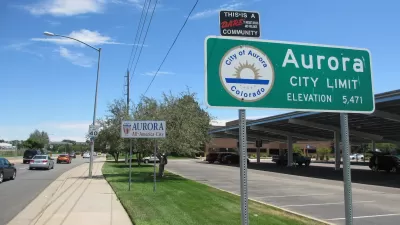Diverse suburban neighborhoods now outnumber their central city counterparts two to one. How will increasing (or decreasing) diversity change America's suburban stereotype?
America's suburbs over the last few decades have been shaking off their predominately middle-class white stereotype. These are among the findings contained in a new report issued by the Institute on Metropolitan Opportunity. In many cities, as reported by The Atlantic Cities' Myron Orfield, "suburban communities are now at the cutting edge of racial, ethnic and even political change in America," seeing large population shifts from predominately white to, increasingly, non-white.
What does this mean for America's suburbs? "Integrated suburbs represent some of the nation's greatest hopes and its gravest challenges," says Orfield, "...the rapid changes seen in suburban communities, suggests a degree of declining racial bias and at least the partial success of fair housing laws. Yet the fragile demographic stability in these newly integrated suburbs – as well as the rise of poor virtually non-white suburbs – presents serious challenges for local, state and federal governments." Increasing numbers of near-total non-white suburbs, for instance, can still face illegal discrimination. Often, these communities can face challenges more intractable than their central city cohorts.
As Orfield notes, "In America, integrated communities have a hard time staying integrated for extended periods." Thus, ensuring that America's newly diverse suburbs remain diverse, and don't reach a so-called "tipping" point towards resegregation, remains tricky. "[I]t does not happen by accident," states Orfield, "[i]t is the product of clear race-conscious strategies, hard work, and political collaboration among local governments."
FULL STORY: How the Suburbs Gave Birth to America's Most Diverse Neighborhoods

Maui's Vacation Rental Debate Turns Ugly
Verbal attacks, misinformation campaigns and fistfights plague a high-stakes debate to convert thousands of vacation rentals into long-term housing.

Planetizen Federal Action Tracker
A weekly monitor of how Trump’s orders and actions are impacting planners and planning in America.

In Urban Planning, AI Prompting Could be the New Design Thinking
Creativity has long been key to great urban design. What if we see AI as our new creative partner?

King County Supportive Housing Program Offers Hope for Unhoused Residents
The county is taking a ‘Housing First’ approach that prioritizes getting people into housing, then offering wraparound supportive services.

Researchers Use AI to Get Clearer Picture of US Housing
Analysts are using artificial intelligence to supercharge their research by allowing them to comb through data faster. Though these AI tools can be error prone, they save time and housing researchers are optimistic about the future.

Making Shared Micromobility More Inclusive
Cities and shared mobility system operators can do more to include people with disabilities in planning and operations, per a new report.
Urban Design for Planners 1: Software Tools
This six-course series explores essential urban design concepts using open source software and equips planners with the tools they need to participate fully in the urban design process.
Planning for Universal Design
Learn the tools for implementing Universal Design in planning regulations.
planning NEXT
Appalachian Highlands Housing Partners
Mpact (founded as Rail~Volution)
City of Camden Redevelopment Agency
City of Astoria
City of Portland
City of Laramie





























